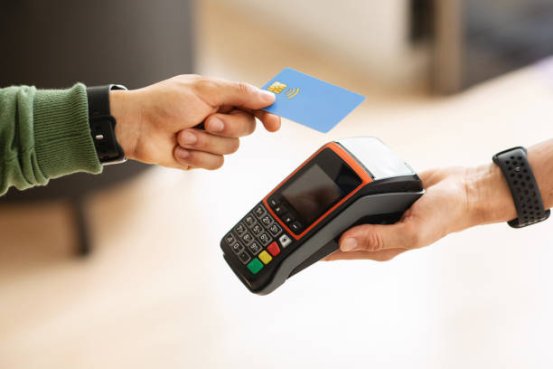Understanding POS Retail Systems: Components, Features, and Industry Applications
Retailers today require efficient systems to manage sales, inventory, and customer service. This article explains how POS systems function, exploring their elements, types, and real-world uses in various retail environments.
Retailers today require efficient systems to manage sales, inventory, and customer service. This article explains how POS systems function, exploring their elements, types, and real-world uses in various retail environments.

Defining a POS Retail System
A Point of Sale (POS) system is a digital framework that supports transaction processing and broader retail operations. It combines hardware—such as barcode scanners and receipt printers—with software that tracks sales, monitors inventory, manages customer data, and evaluates team performance. Its main purpose is to deliver fast and accurate checkout experiences while recording sales activity.
Core Elements of a POS Setup
Hardware:
Typical hardware includes touchscreen interfaces, electronic cash drawers, fast receipt printers, product scanners, and weight scales. These physical tools enhance transaction speed and accuracy, ensuring smoother service.
Software:
The system’s software supports essential processes like inventory control, sales tracking, employee analytics, and customer relationship management. Automation and integration features boost workflow efficiency.
Payment Support:
A comprehensive POS must handle a wide range of payment methods—including chip cards, NFC/contactless, and mobile wallets—offering secure, flexible payment experiences that meet modern consumer expectations.
Analytics Tools:
Built-in analytics provide data on customer trends, stock levels, and overall sales, allowing retailers to fine-tune strategies for pricing, purchasing, and engagement.
Types of POS Systems by Retail Needs
1.On-Premise POS Systems:
Installed on-site with local servers and specific hardware, these systems are built for large-scale retailers requiring consistent, high-volume performance and extensive control over data.
2. Cloud-Based POS Systems:
Accessed via the internet, cloud POS systems offer mobility and ease of use. They’re ideal for small and mid-sized retailers needing affordability, quick setup, and scalability.
3. Mobile POS Systems:
These systems run on tablets or smartphones, allowing businesses such as pop-up shops and food stalls to process sales on the move. They deliver high service flexibility and are easy to transport.
Recommended POS Software Platforms
Square POS:
Best known for ease of use, Square supports inventory tracking, analytics, and CRM tools. It's perfect for small businesses seeking mobile compatibility and user-friendly interfaces.
Shopify POS:
Designed for omnichannel selling, Shopify merges in-store and e-commerce functions, making it a strong solution for hybrid businesses managing both online and physical sales.
Lightspeed Retail:
Offering advanced inventory systems and detailed reporting, Lightspeed fits businesses with complex stock needs and multiple locations, especially in specialized retail.
Vend POS:
A cloud-based POS solution, Vend is known for ease of use and smooth integration with platforms like Shopify and Xero, making it ideal for independent retailers.
Free POS Software Options for Budget-Sensitive Users
Loyverse:
Offering free tools for inventory, customer profiles, and sales reports, Loyverse caters well to cafes, salons, and small shops wanting essential POS functions at no cost.
Imonggo:
This simple POS platform handles product catalogs, sales data, and basic customer information. It’s well-suited to tiny retailers or newcomers to digital sales systems.
Business Benefits of POS Adoption
-
Accurate Transactions: Automated input reduces errors, delivering more precise and reliable records.
-
Improved Customer Satisfaction: Fast checkouts and multiple payment options support seamless shopping experiences.
-
Better Inventory Management: Real-time tracking helps avoid excess stock or shortages, improving supply decisions.
-
Insightful Analytics: Sales and customer data reveal actionable trends that support smarter operations.
Challenges When Implementing POS Systems
Upfront Costs:
Even with affordable cloud options, purchasing hardware and training staff may require substantial initial investment.
Training and Transition:
Employees need time to learn new systems. While temporary disruptions may occur, long-term efficiency gains outweigh the learning curve.
Security Measures:
Businesses must protect sensitive customer and payment data using encryption, secure networks, and restricted system access.
Common POS System Questions
Q1: How do cloud and traditional POS systems compare?
Traditional systems offer stronger local performance, ideal for large stores. Cloud-based systems provide flexibility, remote access, and ease of use for smaller businesses.
Q2: Can I use a mobile device as a POS terminal?
Yes. Tablets and smartphones can function as full POS units with the right apps, ideal for mobile or small-scale retailers.
Q3: Are no-cost POS systems effective?
Yes. Solutions like Loyverse and Imonggo cover basic sales and inventory needs, with paid upgrades offering additional capabilities for growing businesses.
How POS Systems Apply Across Industries
Restaurants:
POS software handles order taking, kitchen displays, and payment processing to improve table service and reduce wait times.
Retail Outlets:
Retailers use POS tools for faster checkouts, real-time inventory, and employee performance tracking.
Service Businesses:
Spas, clinics, and salons benefit from scheduling tools, secure payment processing, and retail product tracking integrated within POS platforms.
Feature Comparison: Major POS Providers
| Feature | Square | Shopify | Lightspeed | Vend |
| Inventory Tools | Yes | Yes | Advanced | Basic |
| Omnichannel Support | Limited | Strong | Moderate | Limited |
| Reporting Options | Complete | Insightful | Customizable | Standard |
| User Experience | Excellent | Moderate | Moderate | Excellent |
Based on platform documentation and industry feedback.
Conclusion
Selecting the right POS solution requires aligning business needs with system capabilities. From mobile flexibility to cloud scalability or traditional power, each POS system offers distinct advantages. Retailers that choose wisely benefit from greater accuracy, efficiency, and customer satisfaction—paving the way for long-term business growth.
References:
https://www.enkash.com/resources/blog/what-is-a-pos-system-and-how-does-it-work/